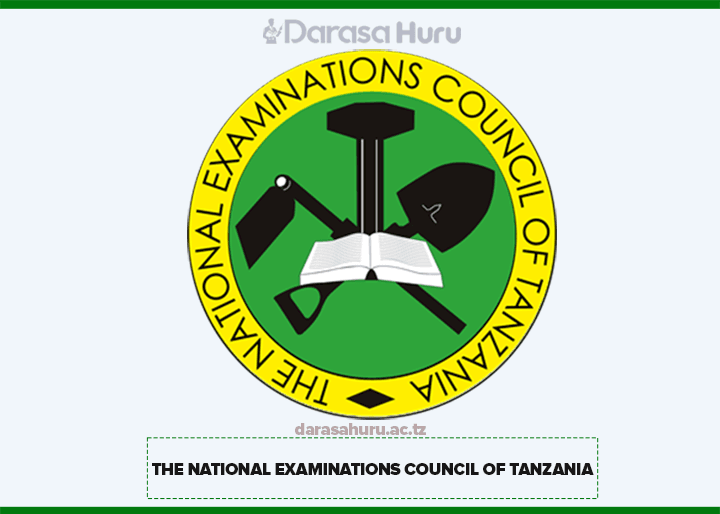Chapter Five: Business Opportunity Identification – Business Studies Form Two
Introduction
Every society faces challenges that can be transformed into business opportunities. However, one must know how business opportunities are identified and determine their potential to be successful businesses.
In this chapter, you will learn about the concept of business opportunity and ways of identifying business opportunities. The competences developed will enable you to identify viable business opportunities in your community and turn them into reality.
Think
A world without businesses addressing community needs and wants.
Activity 1
Look for challenges in your community and spot opportunities:
(a) List five common daily problems you or your friends and families face.
(b) For each problem, brainstorm one potential solution to address the problem.
The concept of business opportunity
A business opportunity is creating goods or services that people need or want in the community. It is about identifying challenges or gaps in the community or market and finding a way to solve them profitably.
For example, imagine Ms Eline getting hungry, and while looking around for something to eat, she realises there is no nearby seller of the food she needs. This is a business opportunity for Ms Eline to open a food kiosk.
A business opportunity mainly arises from unmet community needs and wants, creating new goods or services or improving existing ones. Business opportunities may also occur due to changes in consumer demand, technological advancement, or the introduction of new markets.
Importance of identifying business opportunities
Identifying small business opportunities is very important and brings many benefits that contribute to the overall economic growth of the country; among those benefits are as follows:
1. Job creation
Starting a business can lead to job creation for oneself and others. As the business grows, one might need to employ other people to handle the increased workload, such as inventory, financial and sales management. This contributes to reducing the unemployment rate in the community.
2. Problem-solving
Businesses often offer solutions to people’s daily problems. For example, a community may lack clean and safe drinking water, leading to health issues. To solve this challenge, an entrepreneur may start a small business of water purification systems in the community. By solving this problem, the business improves community health and overall well-being.
3. Promotes creativity
Identifying new opportunities can lead to innovative goods or services. Entrepreneurs constantly seek new and better ways to meet customers’ needs and wants. For example, in most rural areas with limited banking services, mobile money platforms emerged, offering services such as money transfers and bill payments. This led to developing new goods or services and improved people’s lives.
4. Independence
When entrepreneurs own their businesses, they can become bosses and achieve financial liberation. They can decide their business operations, set their working hours, and reap the rewards of their hard work, which can lead to a greater sense of control and satisfaction.
5. Social benefit
Identifying new businesses can allow the development of products that provide a social good in the community. For example, businesses that focus on environmental protection and addressing social inequalities can be established.
Exercise 1
1. Mwembechai Secondary School is organising a fundraising event to earn money for building a library. Identify which kind of business opportunities a school business club may undertake during this event.
2. Jabari is in the same business club as you; he does not understand how business opportunity identification can lead to job creation and solve community problems. Explain to him how identifying business opportunities can contribute to job creation and solve problems within a community with specific examples to support your answer.
Ways of identifying business opportunities
Identifying a business opportunity is just the first step. Turning it into a successful business involves observing the surroundings, finding one’s passion, engaging in market research to understand what potential customers need, studying competitors, and using networks to help understand gaps or what is missing in the market. This requires careful planning, hard work, and perseverance.
Four critical steps, abbreviated as POUR, can be used to identify business opportunities. They are explained below:
1. Find your passions
What are you good at? What do you enjoy doing? Combining your skills and interests can lead to a successful business.
2. Observe your surroundings
Pay attention to people’s needs and challenges. What problems do you see in your community?
3. Use your network
Talk to people about their needs and challenges.
4. Market research
What potential customers like? Study your competitors to identify gaps in the market. Can find potential supplies?
Figure 1: Steps of business opportunity identification
1. Find your passions
Building a business around one’s passions increases the chances of success and job satisfaction. When a person’s passion matches the need, she/he is more likely to overcome the obstacles that may arise in the business. For example, if people enjoy cooking and need healthier meal options, they may start a small healthy meal business.
Identifying one’s passion is an essential step in the entrepreneurial journey. It is about understanding what excites and motivates a person. Here are a few questions to help entrepreneurs find their passions:
1. Hobbies and interest
(a) Which activities do you like to do?
(b) What are you naturally good at doing?
2. Strength or talent
(a) What are your skills and talents?
(b) How can you use them to create value?
3. Values
(a) What is important to you?
(b) What things do you deeply care about?
4. Curiosity
(a) Are there things you want to learn more about?
(b) Which topics fascinate you more?
2. Observe your surroundings
By closely observing the environment, an individual can identify unmet needs, inefficiencies, or market trends that present potential small business opportunities. For instance, noticing environmental pollution caused by the littering of glass bottles in a rural area can spark an idea for starting an upcycling business. This may be glass upcycling, turning glass jars into decorative items for homes and offices.
3. Use your network
Networking can be a source of information for identifying potential small business opportunities. Talking to family or the community can gain valuable insights about trends, customer needs, suppliers, competitors, and potential small business partners. Building strong relationships can also lead to collaboration with other entrepreneurs in the community.
4. Market research
Market research is crucial for identifying and validating viable small business opportunities. By conducting thorough research, an individual can determine customer preferences, buying habits, and the overall market size. This information helps refine one’s business idea and tailor it to meet customer needs and wants.
Market research also helps study competitors; this information provides valuable insights into trends, customer behaviour, and potential gaps or challenges in the market. Identifying areas where competitors fall short can help develop a unique business aspect. Market research requires essential research tools to learn more about entrepreneur ideas.
Here are how small business entrepreneurs can use surveys, interviews, and observations to gather valuable information:
1. Use surveys
(a) Make questionnaires or surveys by developing straightforward, concise questions addressing your research objectives.
(b) Distribute surveys to potential customers, existing customers, or a random sample of your target market.
(c) Review the results and use the data collected to identify trends, preferences, and pain points.
2. Conduct interviews
(a) Conduct in-depth conversations with potential customers, industry experts, or competitors to gain insights.
(b) Ask open-ended questions to encourage detailed responses and explore underlying motivations.
(c) Listen actively to what people say, and ask follow-up questions.
3. Observations
(a) Observe customer behaviour by watching how people interact with products or services in stores or online.
(b) Analyse competitors by studying successful businesses in the industry to identify their strengths and weaknesses.
(c) Identify unmet needs and look for opportunities to fill gaps in the market.
Familiarising yourself with potential suppliers and the associated costs is crucial for assessing the feasibility of a small business opportunity. Understanding the market for resources and materials can help small business entrepreneurs make informed decisions about the business’s potential.
Activity 2
Engage with a diverse group of people in your community, including at least three people who are older than you, younger than you and who usually do not speak with you. Ask them:
(a) What are the major problems facing their community?
(b) Write a report on your findings, stating the potential solutions to the raised problems.
(c) For two solutions stated in (b) above, what steps could you take to see if it would be a good business opportunity?
(d) Which solution would you most like to launch as a business? Why?
Exercise 2
1. Rehema worries about the growing piles of plastic bottles in her neighbourhood. She is passionate about protecting the environment. She wants to know if it is possible to make recycled shopping bags from them and if people would be willing to purchase them.
(a) Which steps should she consider when identifying a business opportunity? Why?
(b) Rehema decides to conduct interviews in her community to learn more. Who should she interview? What are some interview questions she could craft to learn more about protecting the environment?
2. Imagine you live in a rural village. You have noticed that many people, especially children, spend significant time collecting water from distant sources. This often interferes with their education plan and other essential activities.
(a) What problem do you notice?
(b) What are potential solutions and potential benefits to the community?
Skills lab activity
In manageable groups, prepare a business pitch guide (essential items to cover in a business pitch guide include the business opportunity, business ideas and goals, problem identified, solution, target market, competition, amount of money requested, and projected use of funds).
Project activity
In manageable groups, polish the business pitch guide, role play (rehearse) it, and pitch your business ideas in the business club or to a panel of investors.
Chapter summary
1. Business opportunity identification is about identifying challenges or gaps in the community or market and finding a profitably viable way to solve them.
2. Find your passion, observe your surroundings, use your network, and conduct market research to identify a business opportunity.
3. Basic research tools such as surveys, interviews, and observations can help to conduct market research and explore more about business ideas.
4. Job creation, problem-solving, creativity, independence and social benefits are the benefits of identifying business opportunities.
5. Doing a business that an individual is passionate about increases the chances of success and job satisfaction.
6. Conducting market research can help determine customer preference, understand business competitors, and identify potential gaps or unmet needs in the market.
Revision exercise
Choose the correct answer among the given alternatives in questions 1 to 7 and write its letter in your exercise book.
1. Which of the following best defines a business opportunity?
2. Neema loves to cook food. She opened a small restaurant in her village. Why did she do this?
3. One of the following steps is identifying business opportunities.
4. Form Two Business Club members want to establish small businesses in their community. They talked to people to learn about their needs, wants, and challenges. What activity did the Form Two Business Club members conduct?
5. The following are the market research methods that can be used to collect information on customer needs, unmet needs, and challenges.
6. Which market research method is most effective for gathering in-depth information about customers’ motivations and preferences?
7. Which of the following steps in the business opportunity identification process involves understanding the competitive landscape and potential customer needs?
8. Match the items from Group A with those in Group B by writing the letter of a correct option in Group B that corresponds to an item in Group A
| Group A | Group B |
|---|---|
| (i) Understand your target market, competitors, and suppliers. | A. Observe your surroundings |
| (ii) Pay attention to people’s needs and challenges in your community. | B. Opportunity |
| (iii) Talk to people about their needs and challenges. | C. Find your passions |
| (iv) Combine your interest | D. Use your network |
| E. Problem-solving | |
| F. Market research | |
| G. Business idea |
9. Ms. Jackline cannot identify business opportunities; she has approached you to seek help. How can you help her?
10. Why is it important to identify business opportunities?































Leave a Reply